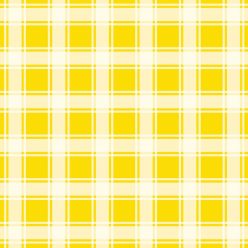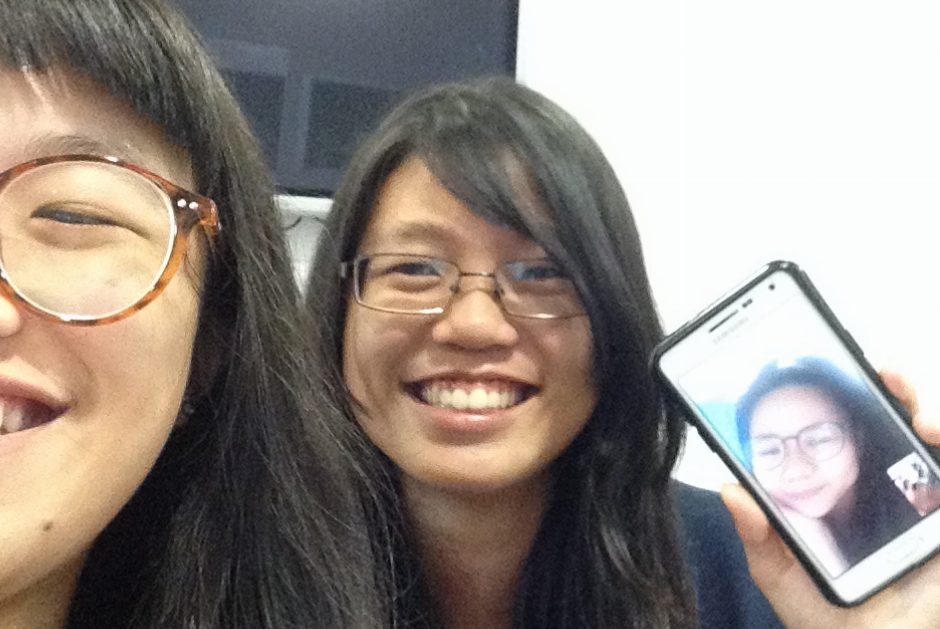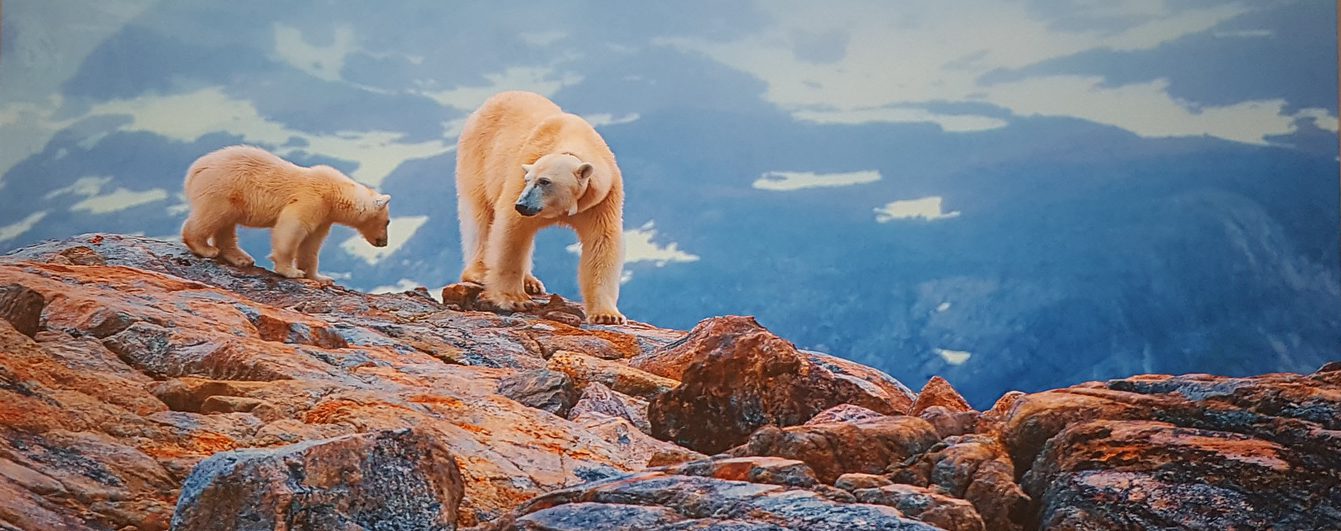When I was just a child, my favourite season was winter. The idea of ice-cold snow falling and covering the earth in white was a dreamy concept for me, having grown up in a tropical city. I’d imagine making friends with polar bears, going fishing in my fur coat and boots, and coming home to my comfy igloo.
While the fascination has worn off a little, I am still amazed by the Arctic, and would really like to visit it at least once in my lifetime. However, with global warming, my dream is threatened to stay what is is – a dream. I found out about “Elysium Artists for the Arctic” that is being exhibited at ION Art through an online promotion. It seemed to address my worries about my dream:
Elysium Artists for the Arctic began as an epic expedition to the high Arctic in August 2015. An explorer team of the worlds’ most renowned and respected photographers, cinematographers, explorers, artists and scientists, spent three weeks travelling through Norway, Svalbard, Greenland and Iceland, in an effort to both qualify and quantify human-induced climate change in the Arctic. Regarded by climatologists as one of the most enchanting and critically important ecosystem on our planet, the Arctic is not only fragile, but under severe threat from the warming of the world’s climate. 90% of earth’s most respected scientists agree that human activities are the principle driving force behind our current climate crisis.
– ION Orchard Webpage
Since I was going to be in the area anyways, I decided that I might as well visit the exhibition. After going to pick up my new phone (this is why I have my own pictures for this exhibition!!) from an aunt who helped to bring it to Singapore, I made my way to ION and headed for the gallery.
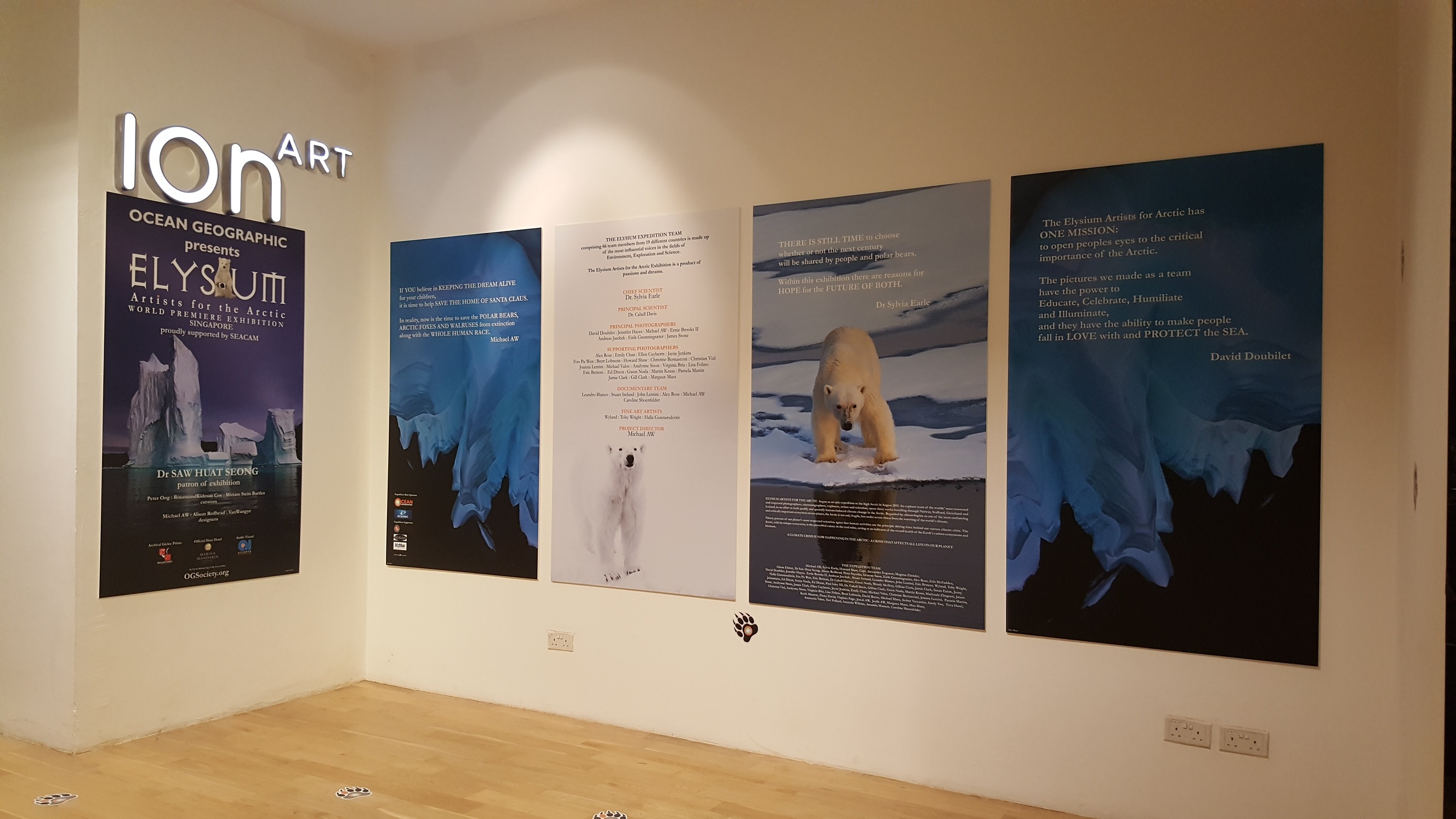 Greeted by a series of panels explaining the exhibition in short, I was excited for the films or documentaries that were said to be included in the list of works.
Greeted by a series of panels explaining the exhibition in short, I was excited for the films or documentaries that were said to be included in the list of works.
 There were paw prints on the floor, so I followed them in.
There were paw prints on the floor, so I followed them in.
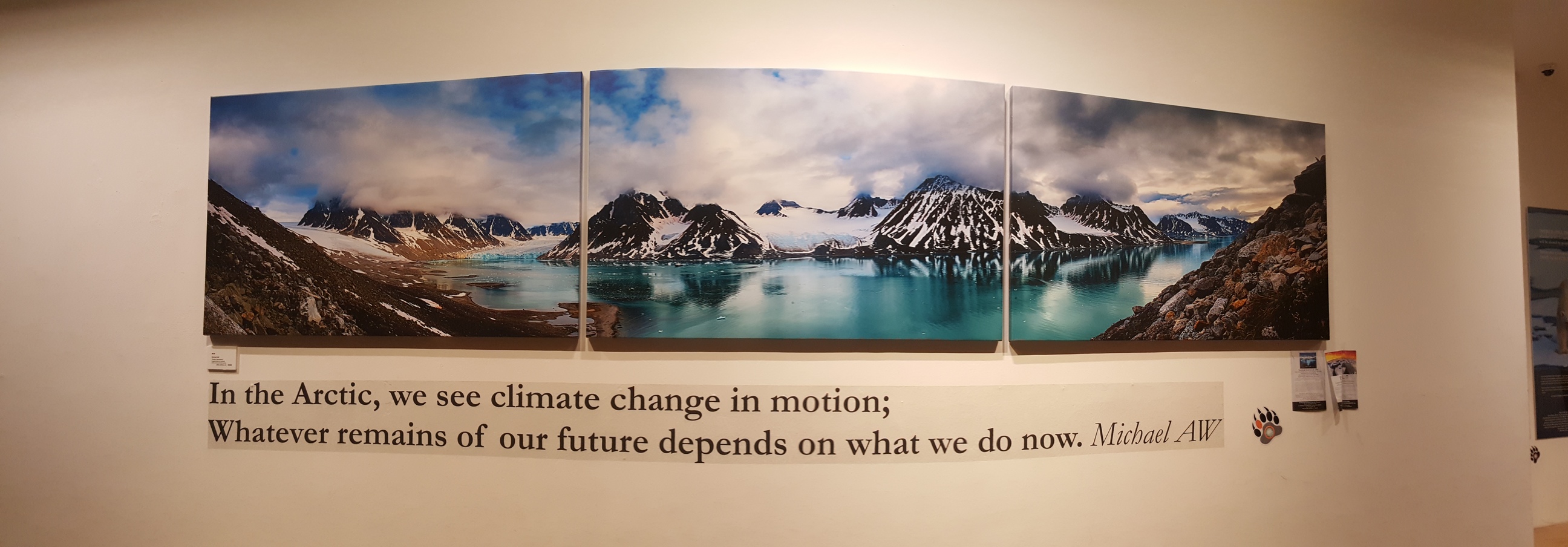
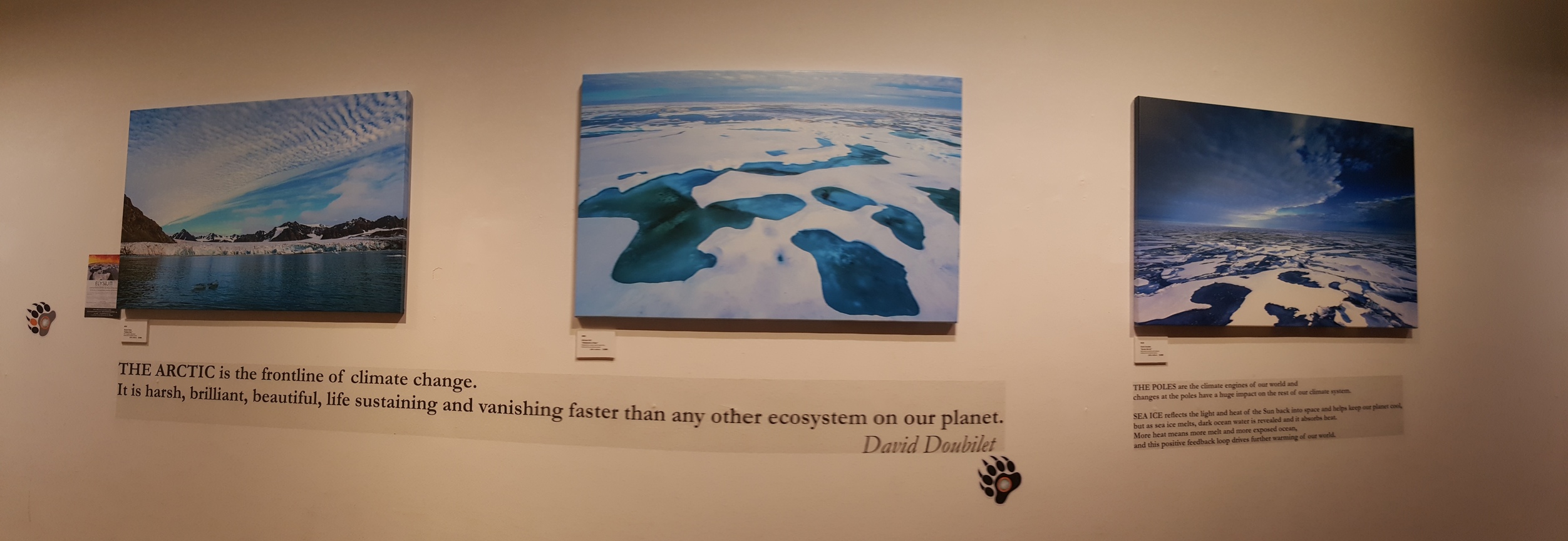 These two sets of photographs were on the corridor on the way into the main space.
These two sets of photographs were on the corridor on the way into the main space.
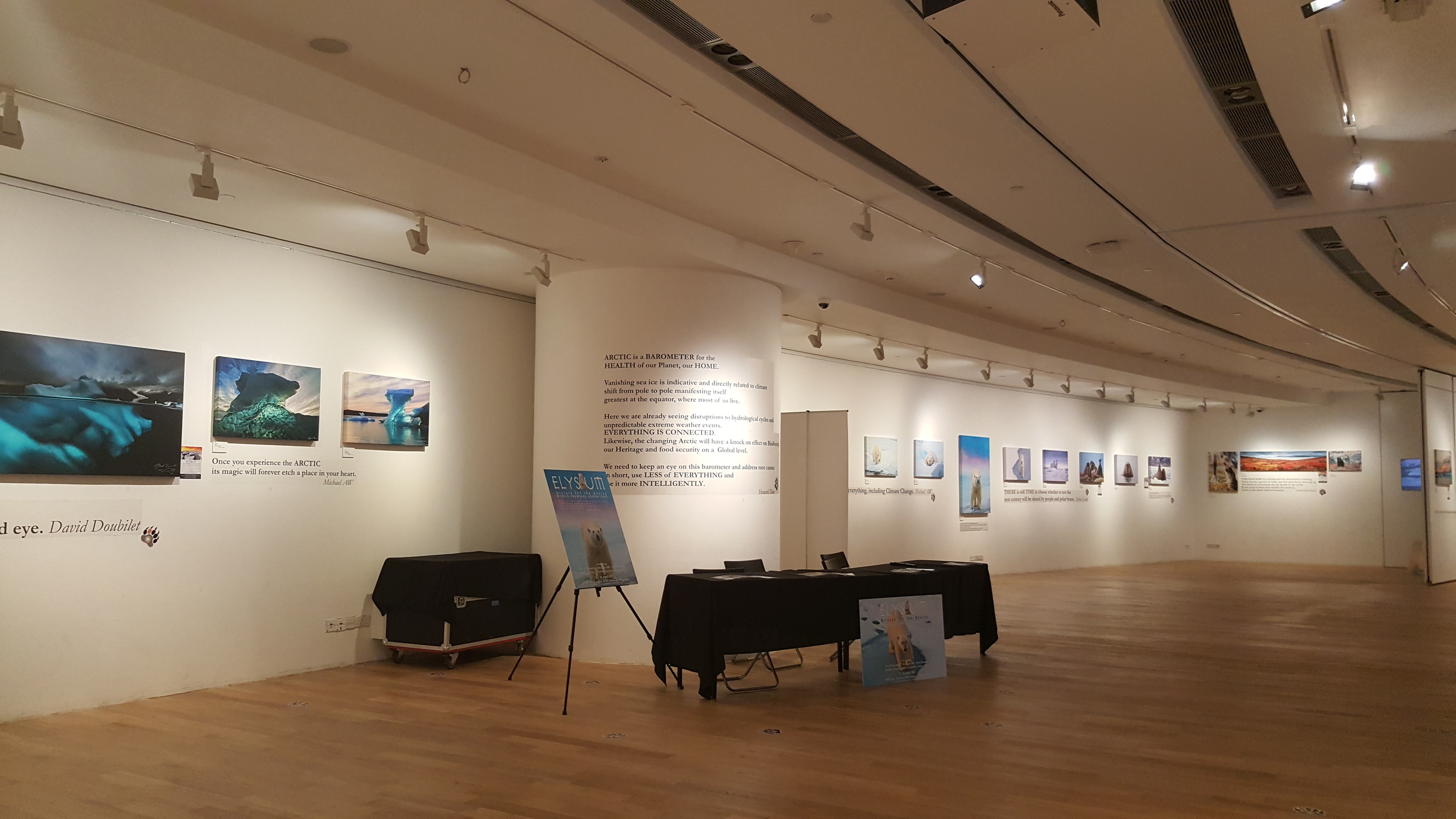 This is what the entirety of the space looked like (there’s more on the right side of this picture) The paw prints led me in a circular path along the walls where the photos were hung, with quotes printed under them in varying sizes.
This is what the entirety of the space looked like (there’s more on the right side of this picture) The paw prints led me in a circular path along the walls where the photos were hung, with quotes printed under them in varying sizes.
Here were some that stood out to me: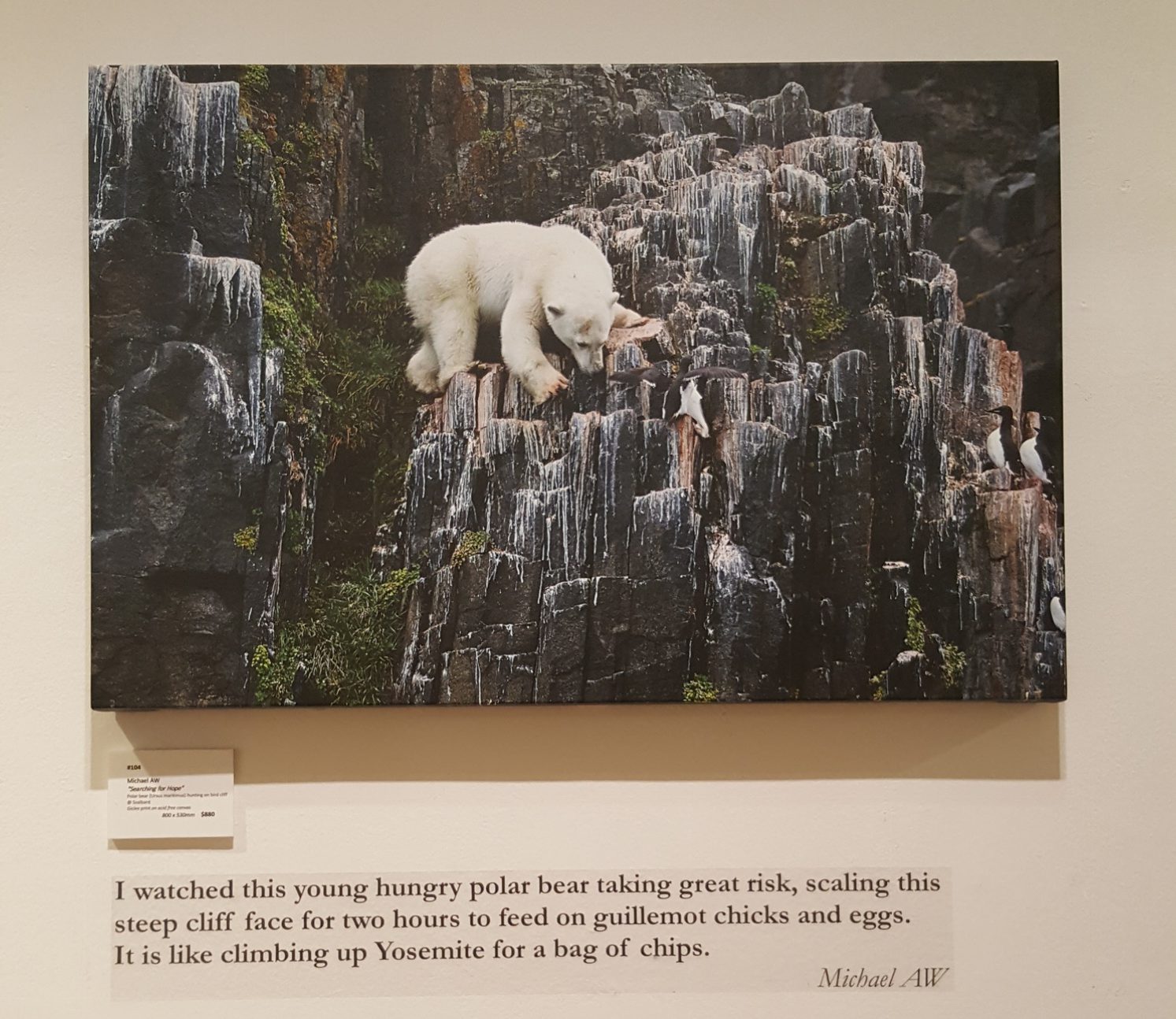
I feel so scared for the little polar bear, clearly forced out of its elements just to hunt for its survival!
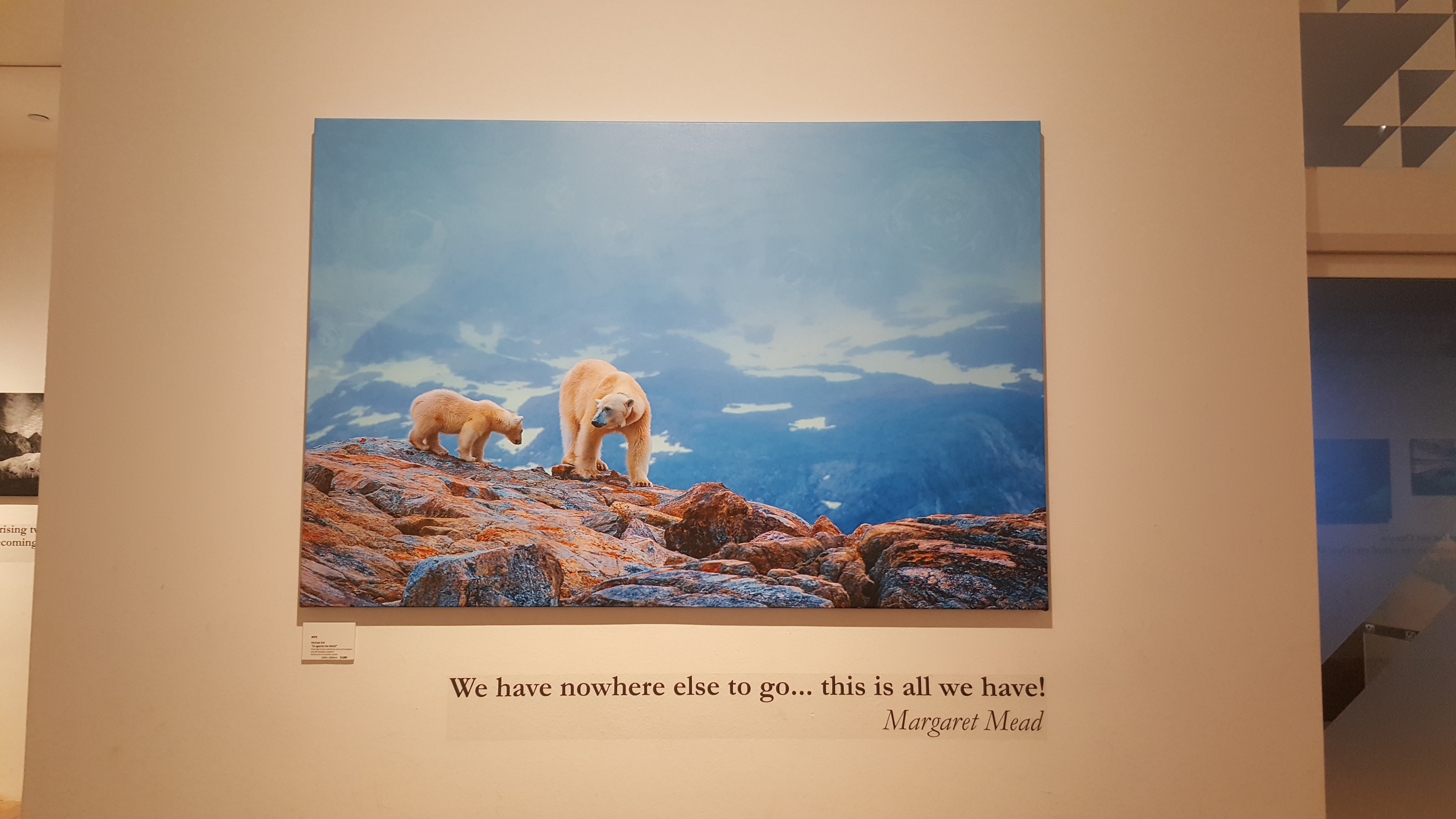
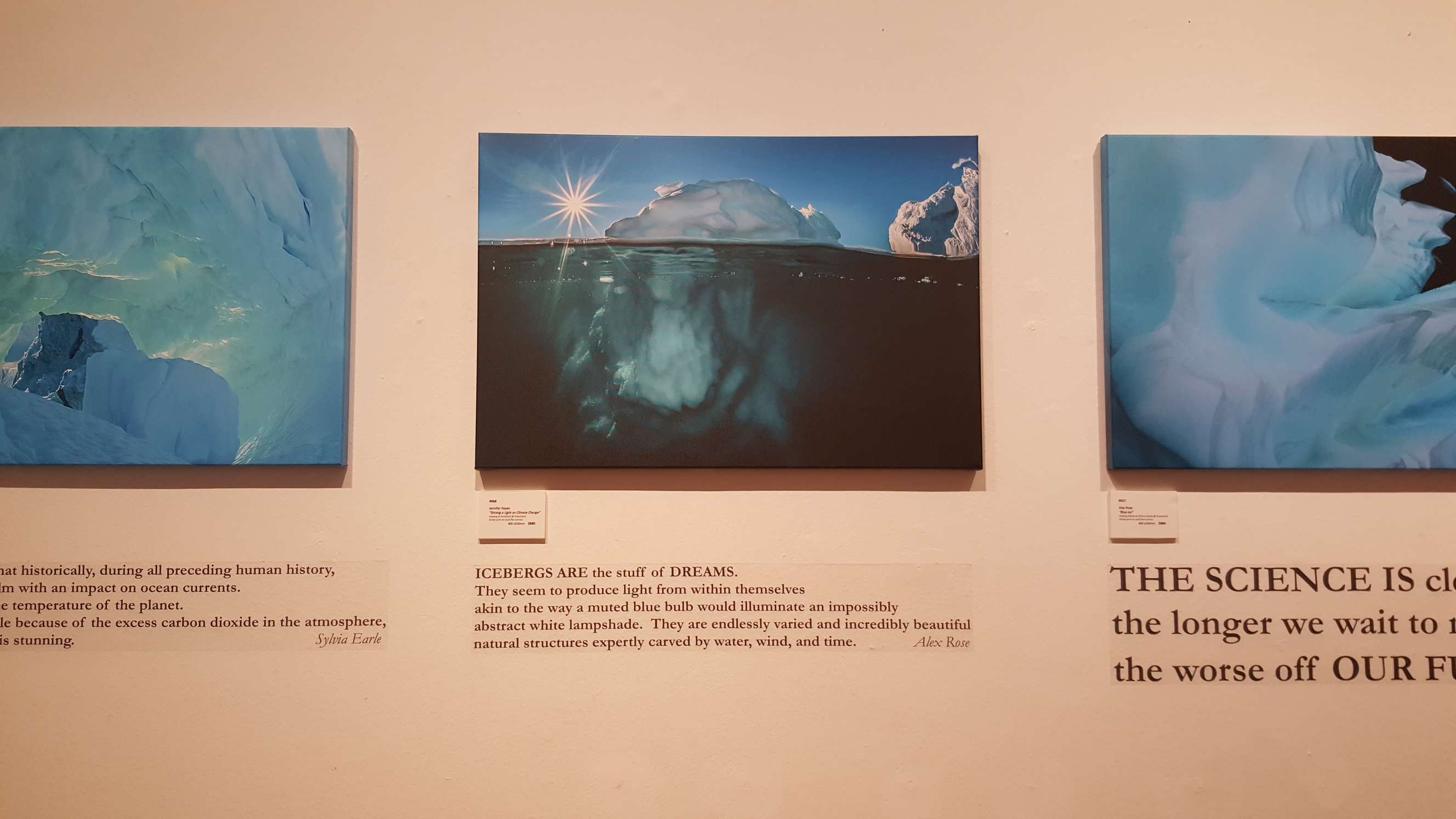
I love the pictures of the icebergs, they are beautifully captured, illuminating the deep sea.
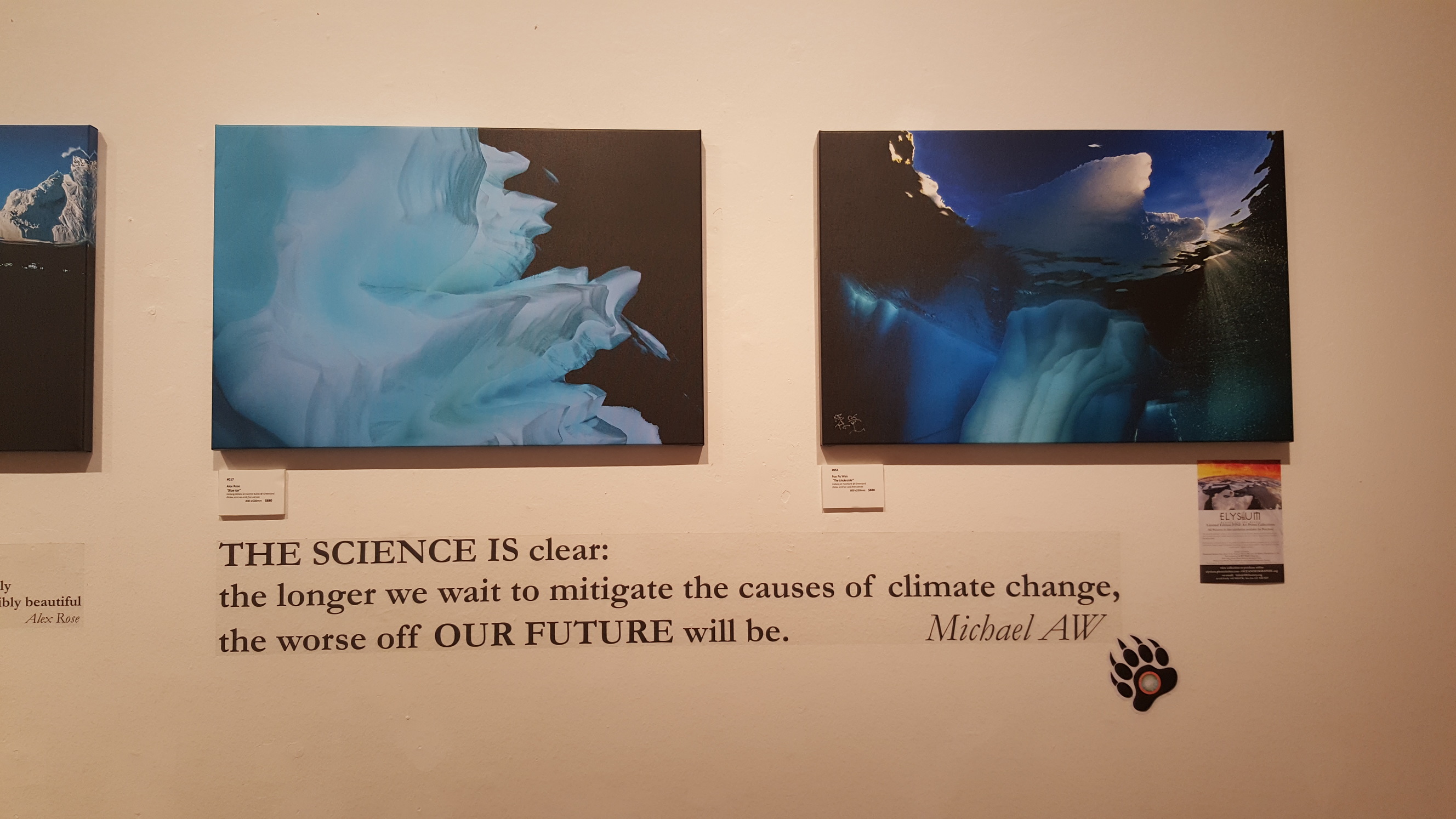
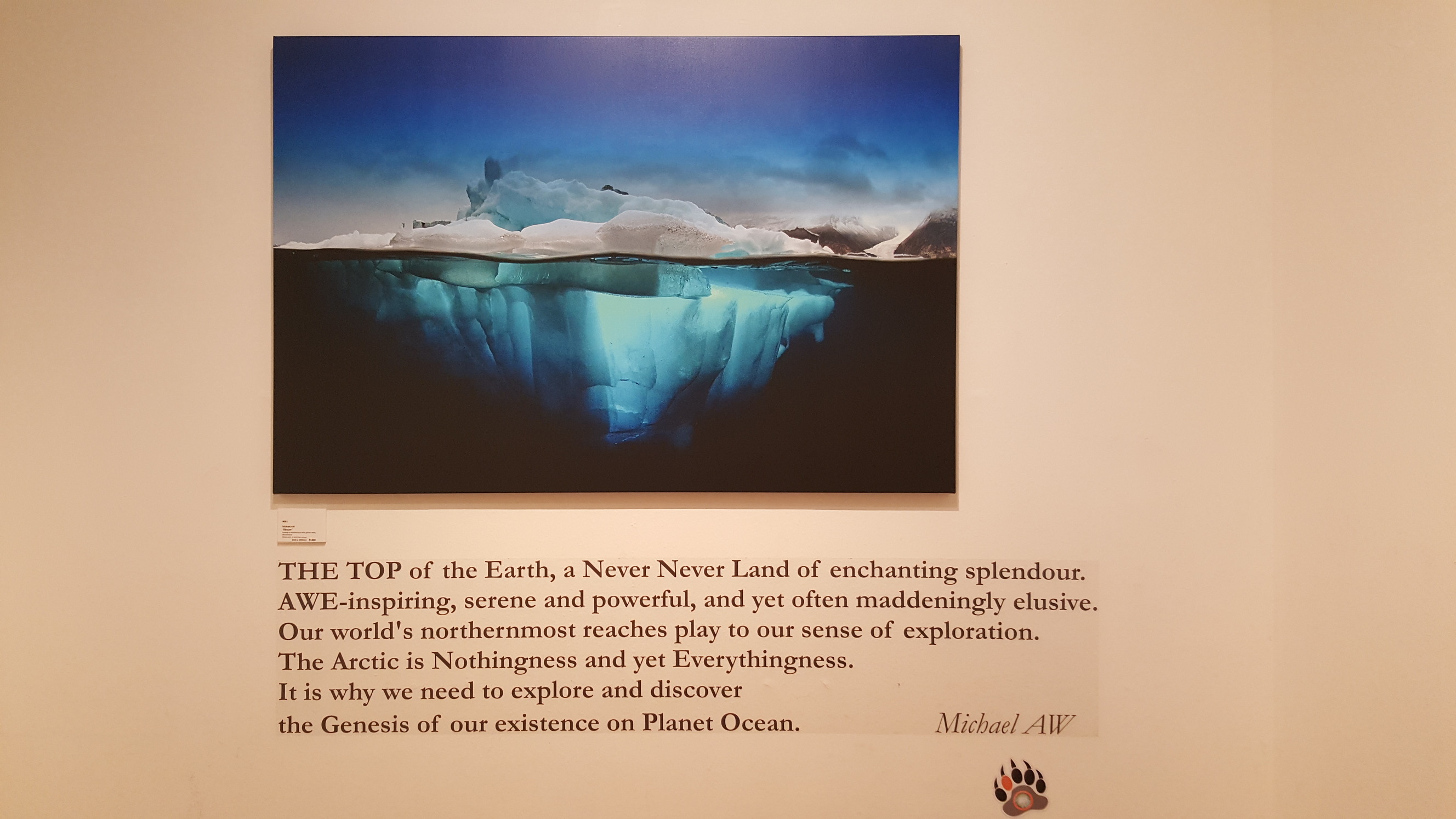
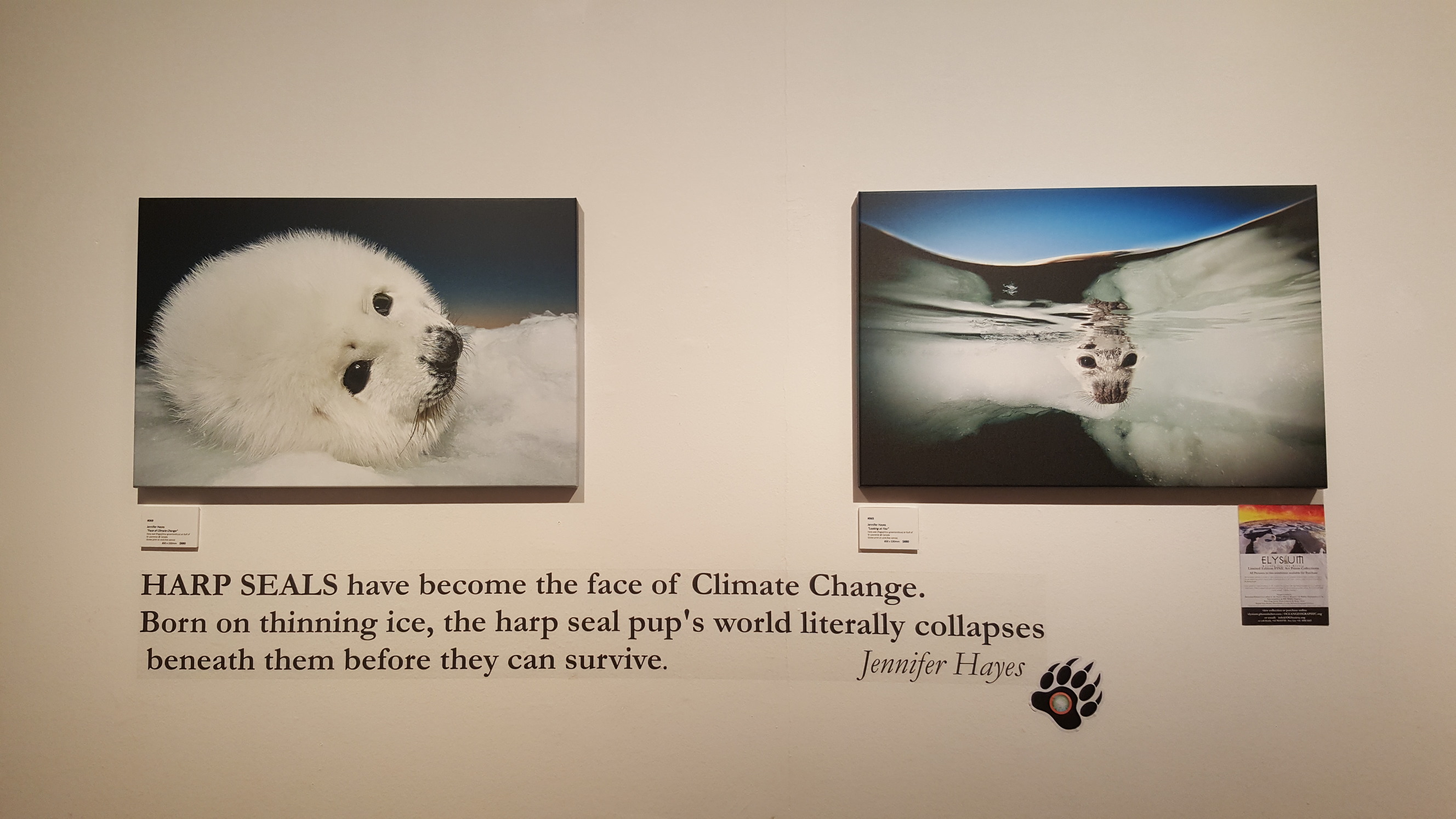
Some evoke empathy in viewers.
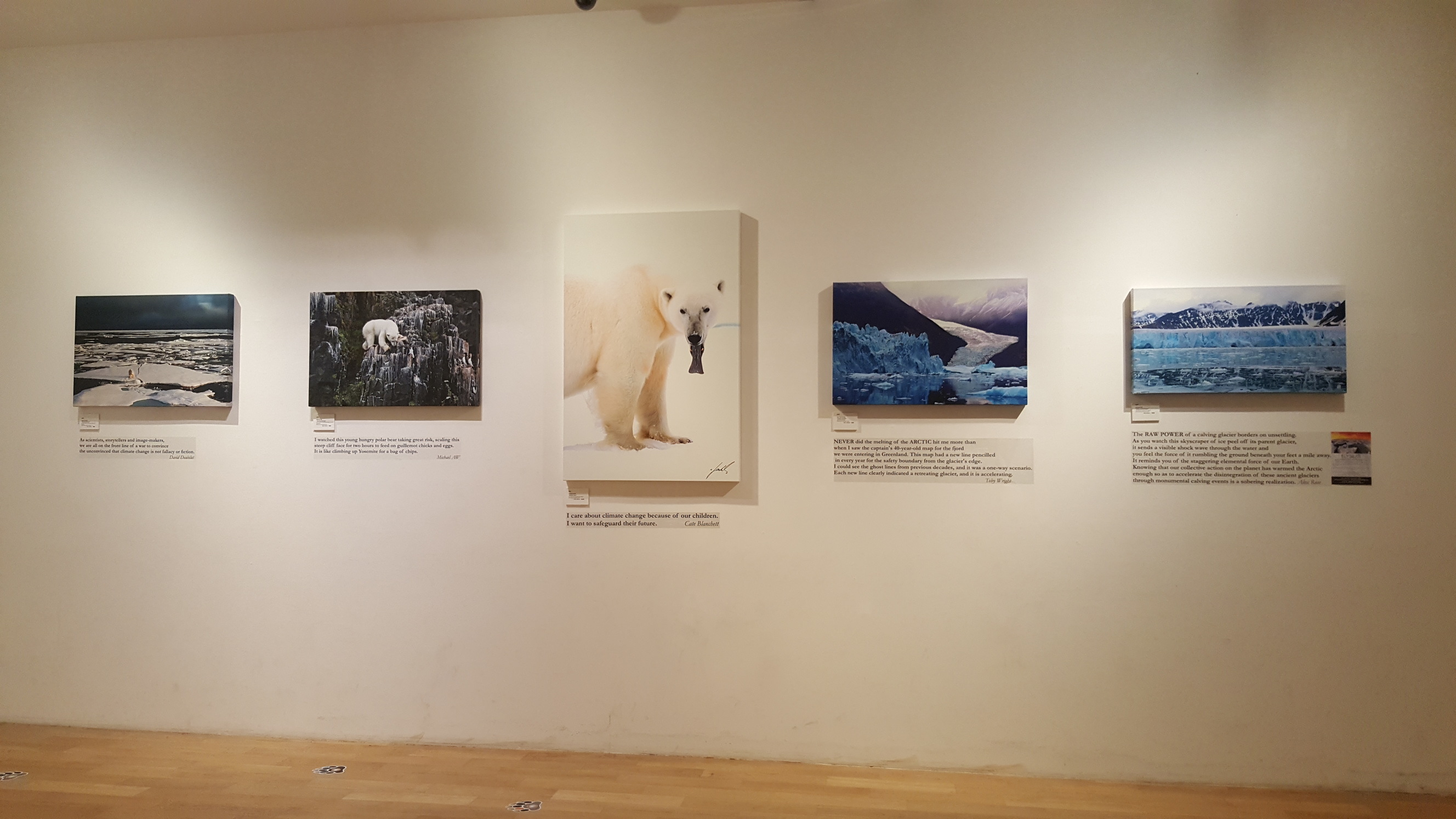
I like the placement of the photographs that illustrate a story about the polar bears.
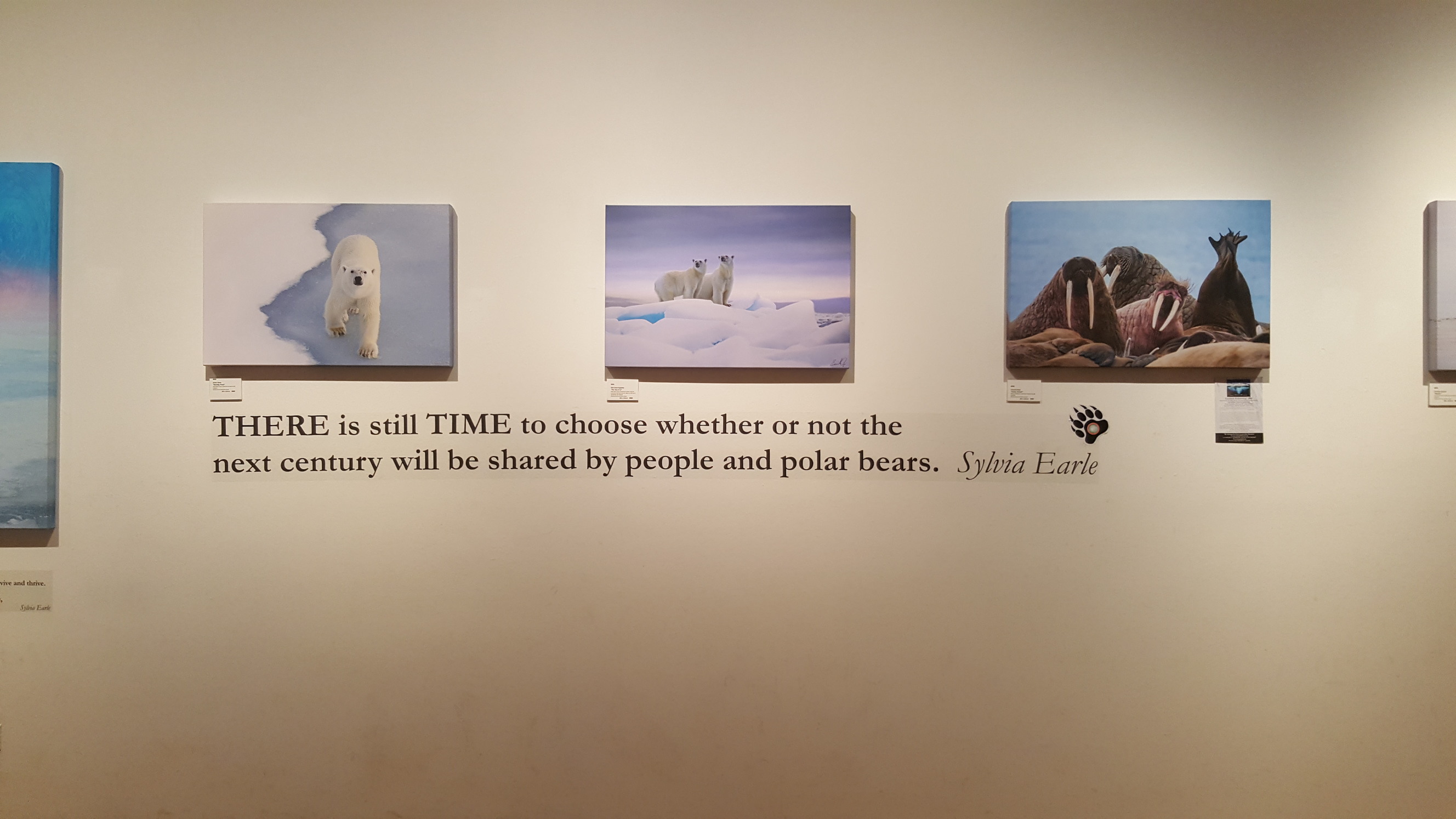
There were also two videos playing in different sections. 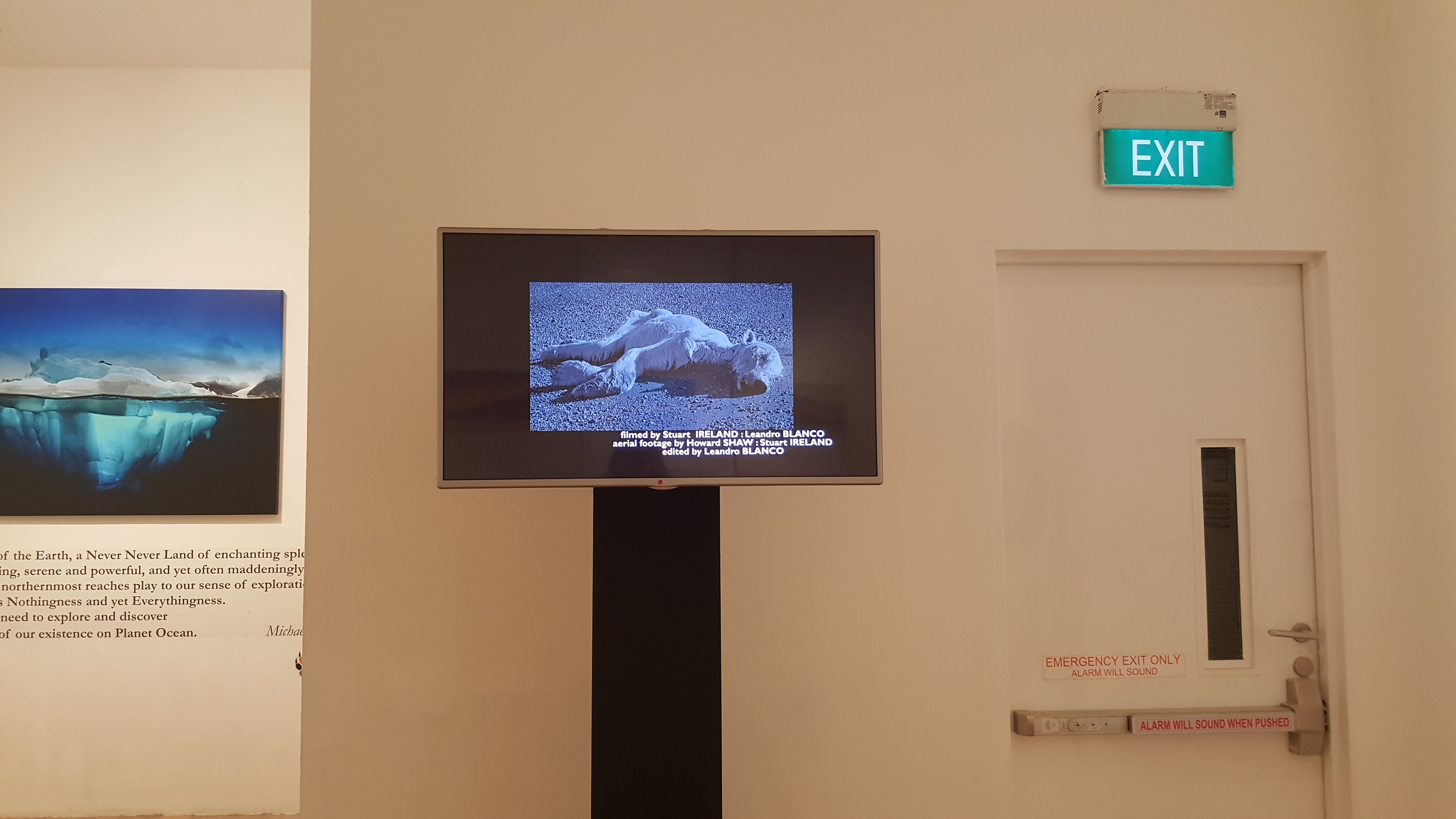
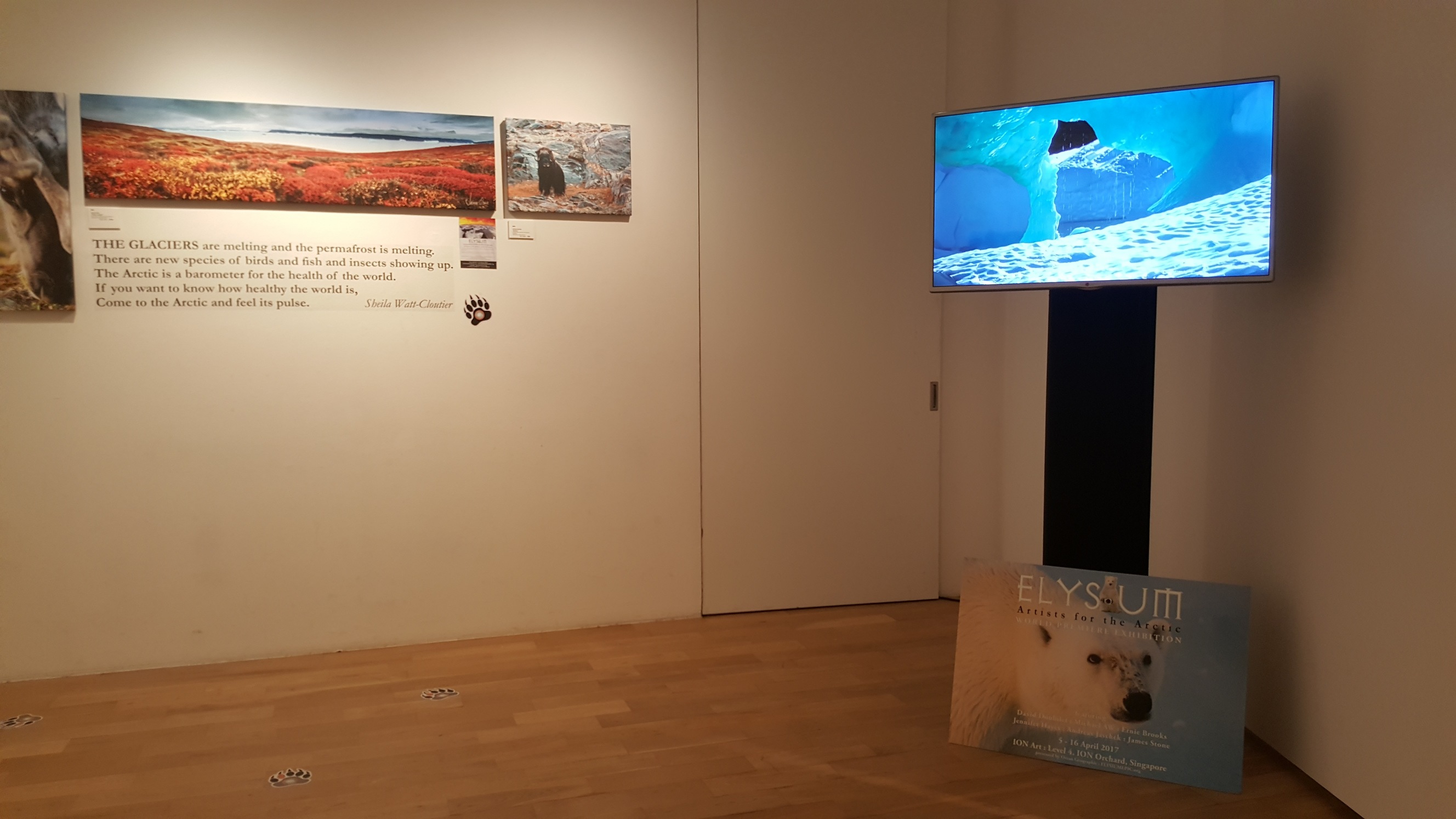 Since the gallery was closing, I couldn’t stay to watch the entirety of the videos, but the idea I get is that they were showing some footage of their exhibition, with polar bears roaming around sparse snowy mounds and audio of different people explaining the Arctic’s demise.
Since the gallery was closing, I couldn’t stay to watch the entirety of the videos, but the idea I get is that they were showing some footage of their exhibition, with polar bears roaming around sparse snowy mounds and audio of different people explaining the Arctic’s demise.
Overall, there were some photographs that stood out and made me wonder about the fate of the Arctic and our world in general, should we continue to be negligent about changing our destructive ways.
However, I do think that the exhibition was lacking in a number of ways that undermined its potential to stir up a more concrete response from the audience.
First of all, I felt that the usage of space could have been much better. Instead of just going around the walls, maybe they could have partitioned the space into areas that showcase different parts of the Arctic, such as icebergs, glaciers, polar bears, and seals separately. This arrangement would feel less random and would make use of the empty space in the middle better.
I also felt that if they maybe dimmed the lighting and use spotlights on the photos and quotes, it would create a darker and more serious mood, in accordance with their message.
The videos could have been much more engaging too, I feel, as they were presenting the facts in a monotonous manner. They could have played more with the use of music and not just spew out facts. I also think that the videos simply being played on the standing TVs, with no specific area dedicated to them, weakened their impact.
It would have garnered more attention if they were played with projectors on the walls.
All in all, I like the message they are trying to bring through, but I feel that the exhibition did not do their expedition justice. I understand that there may be limitations not known to the audience, and this is what they could come up with. The paw prints did bring a small element of interactivity, though.
It is hard to believe that the Arctic truly is melting and that there is a possibility that future generations may only know of it through history books.
After going for this small exhibition, I learnt quite a number of things about art presentation and how this could affect audience’s perceiving of our work. I really think that although the space was small, the exhibition could have so much more impact than it has now, if the presentation was enhanced!
